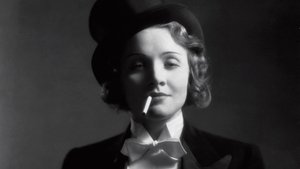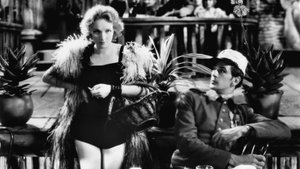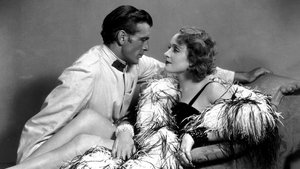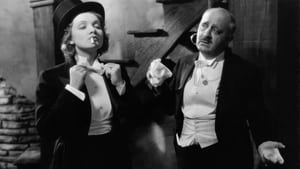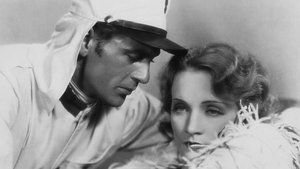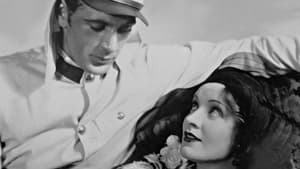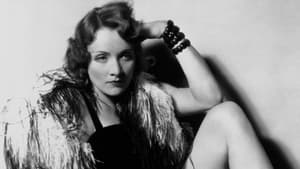Contact: info@alwanfilm.com
Video Sources 0 Views
- Watch trailer
- Morocco 1930 Colorized

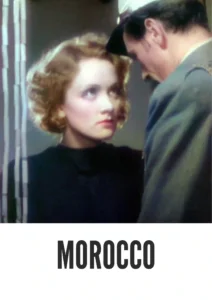
Synopsis
Table of Contents
ToggleMorocco 1930 Colorized Review: A Daring Romance in the Desert

Introduction
Morocco (1930) is a cinematic gem that stands out in the early sound film era, blending romance, drama, and exotic settings into a captivating narrative. Directed by the innovative and influential filmmaker Josef von Sternberg, this film not only showcased the remarkable talents of its star, Marlene Dietrich, but also represented a daring exploration of love and desire against the backdrop of an enchanting Moroccan landscape. As one of the early films to incorporate sound effectively, Morocco remains a pivotal piece of cinema history. In this review, we will delve into the film’s artistic elements, character dynamics, and the broader context of its release, analyzing how Morocco continues to resonate with audiences today.
Check The Full Colorized Movies List
Check Our Colorized Movies Trailer Channel
Understanding Morocco 1930 Colorized: Director, Cast, and Genre
Director’s Vision
Josef von Sternberg, a visionary director known for his stylistic innovations, brought a distinct flair to Morocco (1930). Sternberg’s direction is characterized by its meticulous attention to visual detail and the evocative use of light and shadow, creating a dreamlike atmosphere that perfectly complements the film’s narrative. His artistic choices, such as the striking use of exotic settings and sensual imagery, reflect a fascination with the allure of the unknown.
Sternberg’s vision for Morocco was to create a world that transcended traditional storytelling, inviting audiences into a realm of heightened emotions and complex relationships. He skillfully balances the romantic and dramatic elements, allowing the film to explore the nuances of desire, love, and cultural differences.
The Iconic Performance of Actors
The film stars Marlene Dietrich in a career-defining role as the enigmatic cabaret singer, Amy Jolly. Dietrich’s performance is magnetic, showcasing her exceptional talent and charisma. With her striking beauty and distinctive voice, she captivates both the film’s characters and its audience. Dietrich’s portrayal of Amy is layered with complexity; she is both a symbol of desire and a figure of defiance in a male-dominated society.
Opposite Dietrich is Gary Cooper, who plays the role of Tom Brown, a Foreign Legionnaire enamored by her charm. Cooper’s portrayal is stoic yet vulnerable, providing a perfect counterbalance to Dietrich’s exuberance. The chemistry between the two actors is palpable, adding depth to their characters’ romantic entanglement.
Exploring the Genre
Morocco (1930) can be classified as a romantic drama with elements of adventure. The film’s narrative weaves together themes of love, longing, and identity within the exotic setting of Morocco. This blend of genres allows for a rich exploration of character motivations and societal expectations, making it a notable entry in the early sound film canon.
The film’s setting in Morocco serves as a backdrop for the exploration of cultural contrasts and the complexities of human relationships. The use of location shooting, combined with Sternberg’s stylistic approach, elevates Morocco to a work of art that captures the imagination of its audience.
Exploring the World of Morocco 1930 Colorized: Plot and Characters
Detailed Synopsis
Morocco (1930) begins with Amy Jolly (Marlene Dietrich) performing in a vibrant cabaret in a Moroccan city. Her captivating presence quickly draws the attention of Tom Brown (Gary Cooper), a soldier of fortune who is captivated by her beauty and spirit. Their initial connection is electric, but the challenges they face from societal expectations and personal desires create tension.
As the narrative unfolds, Amy is courted by a wealthy and powerful man, leading to a love triangle that tests her loyalty and desires. Tom’s commitment to the Foreign Legion adds layers of complexity, as he grapples with his feelings for Amy while navigating the dangers of his profession.
The film’s climax culminates in a dramatic confrontation that forces Amy to make a life-altering decision between security and true love. The film’s ending leaves viewers contemplating the sacrifices made for love and the complexities of human relationships.
The Complex Protagonist and Memorable Supporting Characters
Amy Jolly is a multi-dimensional character whose journey reflects the struggles faced by women in the 1930s. She embodies both strength and vulnerability, navigating her desires in a world that often seeks to confine her. Dietrich’s portrayal brings depth to the character, allowing audiences to empathize with her choices and challenges.
Supporting characters, including the wealthy suitor and Tom’s fellow soldiers, add richness to the narrative. Each character contributes to the film’s exploration of love, honor, and the societal constraints that shape their lives. The interplay between the characters enhances the emotional weight of the story, making it a compelling watch.
The Art of Film Aesthetics
Visual Storytelling and Cinematic Techniques
Morocco (1930) is a visual feast, showcasing the artistry of cinematography in the early sound era. The film employs striking visual storytelling, utilizing composition and lighting to create mood and atmosphere. Von Sternberg’s use of shadows and silhouettes adds a layer of intrigue, enhancing the film’s romantic and dramatic elements.
The art direction and costume design play crucial roles in establishing the film’s exotic setting. From the vibrant colors of the cabaret to the dusty streets of Morocco, the visual elements transport viewers into a world that feels both lush and gritty. Dietrich’s iconic tuxedo and androgynous style are particularly noteworthy, challenging traditional gender norms and making a bold statement about female identity.
Music and Sound Design
As one of the early sound films, Morocco makes effective use of music and sound design to enhance the storytelling. The film’s score, composed by Hans May, underscores the emotional arcs of the characters and adds depth to key moments. The integration of music in the cabaret scenes not only entertains but also serves to establish the setting and atmosphere, immersing viewers in the world of the film.
Early Sound Films: A Brief History
The Transition to Sound
The late 1920s marked a significant turning point in cinema history with the transition from silent films to sound. This technological revolution brought new possibilities for storytelling and character development, allowing filmmakers to explore dialogue and soundscapes in ways previously unimaginable.
Morocco (1930) was released during this pivotal moment, showcasing the potential of sound in film. The integration of dialogue, music, and sound effects transformed the viewing experience, making it more immersive and engaging. Audiences were drawn to the new dynamic created by sound, leading to a heightened appreciation for films that embraced this innovation.
Morocco 1930 and Its Impact on Early Sound Cinema
Significance of Morocco (1930)
Morocco (1930) is significant not only for its narrative and performances but also for its role in the evolution of sound cinema. The film demonstrated the potential of combining visual storytelling with sound, setting a precedent for future filmmakers. Its success helped pave the way for other films that embraced sound as a central element of their storytelling.
The film’s bold exploration of gender and desire also contributed to its lasting impact. By presenting a strong female lead who defies societal norms, Morocco challenged traditional gender roles and inspired future portrayals of women in cinema.
The Debate Over Film Aesthetics and Representation
Controversy Surrounding Gender Representation
While Morocco (1930) is celebrated for its bold representation of female desire and identity, it also sparked debates about gender representation in early cinema. Some critics argue that the film reinforces certain stereotypes and presents a limited view of women’s roles in society. The character of Amy Jolly, while complex, exists within a framework that often objectifies her beauty and sexuality.
The portrayal of gender dynamics in Morocco invites viewers to critically engage with the film and consider the broader implications of its narrative. While the film can be seen as progressive for its time, it also reflects the limitations of its era and the ongoing struggles for gender equality in film and society.
Examining Morocco 1930 Colorized as a Landmark Film
Aesthetic and Cultural Analysis
Morocco (1930) serves as a landmark film in the early sound era, showcasing the potential of cinema to explore complex themes and relationships. Its aesthetic choices, from cinematography to costume design, reflect the artistic possibilities of the medium. The film’s exploration of cultural contrasts and the impact of colonialism also resonates in contemporary discussions about representation and identity.
Through its bold storytelling and visual artistry, Morocco invites audiences to reflect on the complexities of love, desire, and cultural differences. The film’s legacy continues to influence filmmakers and shape discussions about gender, identity, and representation in cinema.
Influence and Legacy: Morocco 1930 Colorized’s Impact on Cinema
The Enduring Appeal of Morocco
The impact of Morocco (1930) extends far beyond its initial release, influencing generations of filmmakers and audiences. The film’s daring exploration of romance and desire has inspired numerous works in the romance and drama genres. Its themes of longing and identity continue to resonate with contemporary audiences, making it a timeless classic.
Marlene Dietrich’s performance as Amy Jolly remains iconic, solidifying her status as a cinematic legend. Her portrayal of a strong, independent woman who challenges societal norms has inspired countless actresses and filmmakers, paving the way for more nuanced representations of women in cinema.
Director’s Cinematic Legacy: Beyond Morocco 1930 Colorized
Josef von Sternberg’s Influence
Josef von Sternberg’s directorial career extended beyond Morocco (1930), encompassing a body of work that continues to be celebrated for its artistry and innovation. Known for his collaborations with Dietrich, von Sternberg created a series of visually stunning films that pushed the boundaries of storytelling and aesthetics.
His influence on filmmaking is evident in his exploration of complex characters and themes, as well as his distinctive visual style. Von Sternberg’s work has inspired future generations of filmmakers, who have drawn upon his techniques and sensibilities to create their own cinematic masterpieces.
Themes Explored in Morocco 1930 Colorized
Love, Desire, and Identity
Morocco (1930) delves into themes of love, desire, and identity, capturing the complexities of human relationships against the backdrop of cultural differences. The film explores the tension between societal expectations and individual desires, particularly through the character of Amy Jolly. Her journey reflects the struggles faced by women in a patriarchal society, as she navigates the challenges of love and independence.
The film also addresses themes of belonging and cultural identity. The contrasting worlds of the cabaret and the Foreign Legion highlight the complexities of navigating cultural boundaries and the search for a sense of belonging. This exploration adds depth to the narrative, making it a rich and thought-provoking experience.
Reception and Controversy Surrounding Morocco 1930 Colorized
Initial Reviews and Audience Reactions
Upon its release, Morocco (1930) received positive reviews for its bold storytelling, striking visuals, and compelling performances. Critics praised Dietrich’s portrayal of Amy Jolly, noting her ability to embody the character’s complexities and vulnerabilities. The film’s exotic setting and engaging narrative also garnered acclaim, contributing to its success at the box office.
However, the film also faced criticism for its portrayal of gender dynamics and cultural stereotypes. Some critics argued that it reinforced certain stereotypes about women and exoticism, prompting discussions about representation in early cinema. Despite these controversies, Morocco has remained a beloved classic, celebrated for its artistic merits and cultural significance.
Where to Watch Morocco 1930 Colorized Online
For those eager to experience Morocco (1930), the film is available on various streaming platforms, including Amazon Prime Video and Turner Classic Movies. Additionally, DVD and Blu-ray versions offer both the original film and special features, allowing audiences to delve deeper into the cinematic legacy of this timeless classic.
FAQs About Morocco 1930 Colorized
Q: What is the significance of Morocco (1930)?
A: Morocco (1930) is significant for its groundbreaking portrayal of a strong female lead, its innovative use of sound and visuals, and its exploration of themes of love and identity within an exotic setting.
Q: Who directed Morocco (1930)?
A: Morocco (1930) was directed by Josef von Sternberg, a renowned filmmaker known for his stylistic innovations and collaborations with Marlene Dietrich.
Q: What themes are explored in Morocco (1930)?
A: The film explores themes of love, desire, identity, and cultural contrasts, highlighting the complexities of human relationships within the context of societal expectations.
Q: How has Morocco (1930) influenced the film industry?
A: Morocco (1930) has influenced generations of filmmakers with its bold storytelling, innovative use of sound, and strong portrayal of female characters, setting a precedent for future works in cinema.
Conclusion
Morocco (1930) stands as a remarkable achievement in early cinema, showcasing the artistry of Josef von Sternberg and the magnetic performance of Marlene Dietrich. The film’s exploration of love, desire, and identity continues to resonate with audiences, making it a timeless classic. As we reflect on its legacy, Morocco invites us to engage with the complexities of human relationships and the cultural landscapes that shape our lives. Whether experienced in its original form or through the lens of contemporary analysis, Morocco remains a testament to the enduring power of cinema to inspire and captivate.
